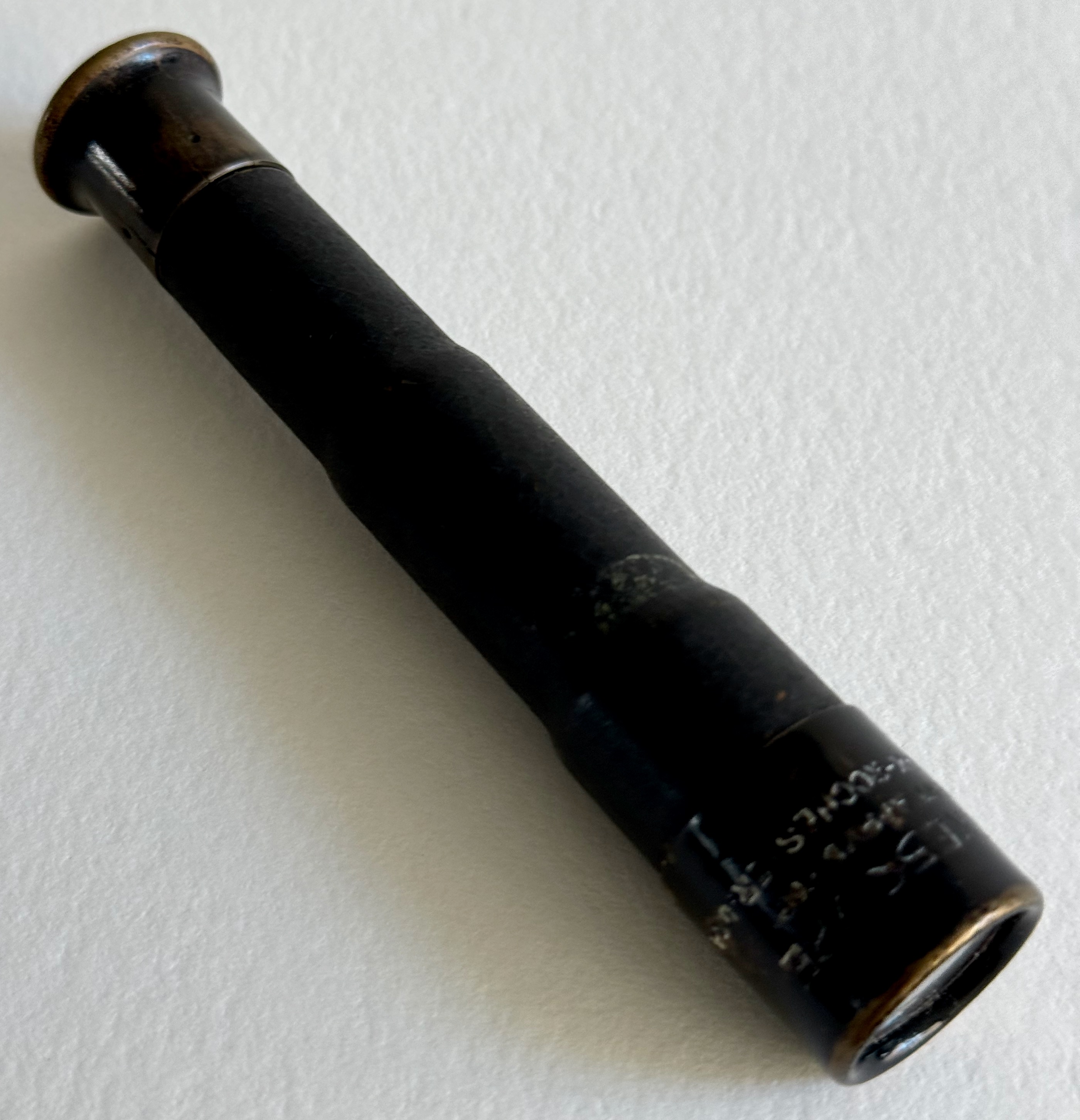

Title: Early 20th Century Antique Small Pocket Spy Tool Telescope
Shipping: $29.00
Artist: N/A
Period: 20th Century
History: Art
Origin: North America > United States
Condition: Excellent
Item Date: N/A
Item ID: 658
Here's a wonderful example of an antique pocket spy telescope from the early 20th century, likely dating back to the 1930s. This charming little tool is perfect for keeping by your bedside or simply appreciating for its classic design and the beautiful patina it has developed over the years. Telescopes of this quality are rare today, making this a great opportunity to own a piece of nostalgia. The pocket-size telescope is 4" inches long and about three-quarter inches wide. In the early 20th century, pocket spy telescopes were popular tools used for discreet observation. These compact, handheld devices were crafted with precision, often made from brass or other durable metals, and were commonly associated with maritime use, military operations, and personal adventures. Their portability made them an essential tool for travelers, explorers, and even spies. By the 1930s, advancements in optical technology improved their magnification and clarity, though they remained elegantly simple in design. Over time, these telescopes became sought-after collectibles, valued for their craftsmanship, historical significance, and the rich patina they developed, symbolizing an era of exploration and ingenuity.
The history of the telescope dates back to the early 17th century. The first recorded telescope was invented in 1608 by Dutch spectacle maker Hans Lippershey, who created a simple refracting telescope. His design used a convex objective lens and a concave eyepiece to magnify distant objects, primarily for use in navigation and astronomy. Soon after, in 1609, Galileo Galilei improved upon Lippershey's design, creating his own telescope, which he used to make groundbreaking astronomical discoveries, including the moons of Jupiter and the phases of Venus. This marked a revolution in scientific observation, allowing humans to explore the cosmos in unprecedented detail. Over the centuries, telescopes evolved significantly. Isaac Newton developed the reflecting telescope in 1668, using mirrors instead of lenses to avoid chromatic aberration. This design became the foundation for many modern telescopes. Throughout the 18th and 19th centuries, further improvements in lens grinding, mirror making, and mount designs allowed for greater magnification and precision. In the 20th century, with the development of radio telescopes, humans began exploring not only visible light but other wavelengths of the electromagnetic spectrum. The Hubble Space Telescope, launched in 1990, represents one of the most significant advancements in telescope technology, providing breathtaking images of the universe from space. Today, telescopes continue to evolve, from ground-based observatories to space-based instruments, expanding our understanding of the universe.